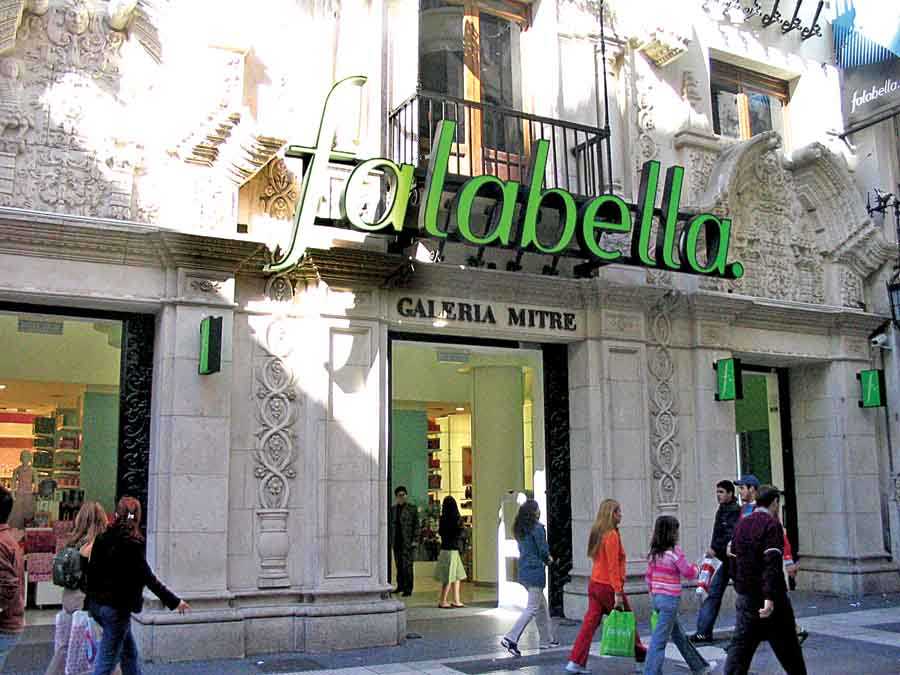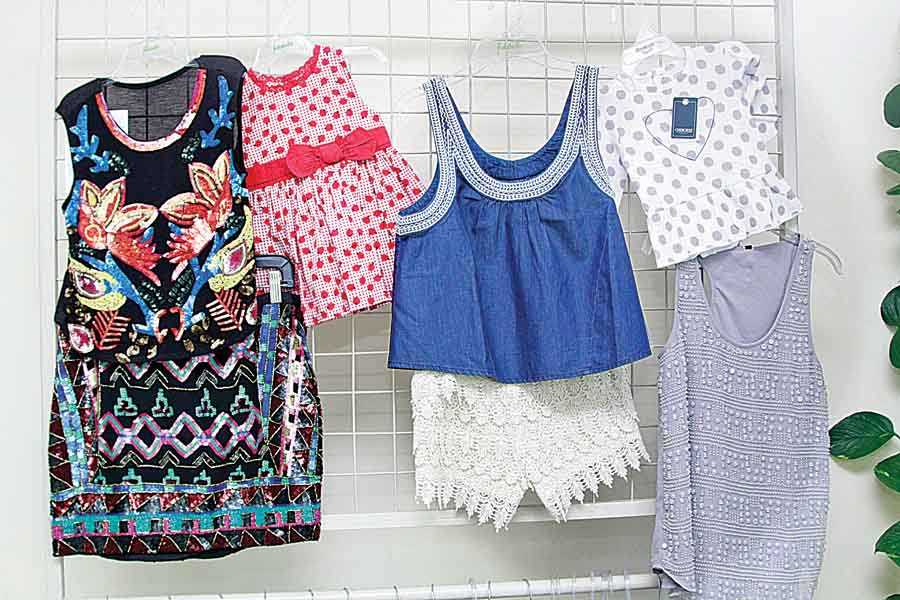
The traditional buyer base of Indian apparel exports is witnessing a subtle but impactful change with many exports adding new and hitherto relatively unexplored markets in their portfolio. Not only has this shift taken away the concentration on getting business from the US and Europe, both of which have seen rough times in the past years, but it also gives year round business since most of the new markets are in the southern hemisphere. Among the most important emerging markets today is South America… with a stable economy and rising purchasing power the countries of the region are an attractive alternate to the traditional markets which have stagnated. Steering the industry into this potential market is Falabella India buying office, which represents the largest chain of stores and brands from the region. Alpana Razdan, the young, enthusiastic yet experienced General Manager of the newly established buying office shares with Apparel Online why exporters need to look more closely at this market.
Even as many exporters still mull over the idea of entering South America, the Falabella India buying office, which was setup three years ago has seen an average 100% year-on-year growth with target to become a US $ 100 million sourcing office in the coming two years or so. “Today Falabella is one of the fastest growing sourcing office in the country,” claims Alpana. Having worked with many leading brands/buying offices like Benetton, Otto AGN, Triburg, Redcats, NEXT in nearly one-and-a-half decade since walking out of NIFT, Delhi with a post-graduate technical degree in garment manufacturing technology after doing her management degree in business administration as well, Alpana has also been an integral part of the growth of the NSL India office (NEXT) prior to joining Falabella. “I felt the need to move on to a bigger challenge and when Falabella decided to offer her a more challenging role, it was exciting to be the bridge between two new partners,” says Alpana. “From setting up the office to establishing sourcing strategy for Falabella for the Indian subcontinent it has all been a very exciting journey,” she adds. The India office is a regional hub for the subcontinent, reporting to the Shanghai office.
The enthusiasm that Alpana exudes is visible in the growth of the office and also in the confidence she has of the future potential of India in the sourcing strategy of Falabella. Before the office was opened, India sourcing was practically nil, with few exporters working through agents for very small quantities, but now with big exporters like Gokaldas Exports, Jyoti Apparels, Orient Craft, Mandhana Group, Samrat Gems, Alok industries, Padma and SCM on board, the volumes are much bigger and the product range and quality on offer has caught the attention of the parent company, which has given Alpana the creative space to develop business at her own pace. “Falabella has approx. 14 in-house brands per department and also operates a super market called Tottus, the scope to offer India made products to all these ventures is huge and we have just started,” says Alpana.

The 125 years old public listed Chilean department store, head quartered in Santiago is one of the oldest and largest retailers in South America with presence in four countries – Chile, Peru, Columbia and Argentina. In 2013, the company was awarded for being the best managed company in Latin America, which only increased its credibility as a buyer. Over the region the retailer has 170 stores between Falabella and Tottus, plus 136 stores of Sodimac, besides 18 shopping malls and 14 shopping centres. Just recently Falabella entered Brazil through Dicico (a home improvement chain in Brazil San Paulo) and it is now targeting Uruguay for the Sodimac concept. “With Falabella eyeing the home segment, our next area of focus is to develop vendors for this section,” shares Alpana. As of now the office is mostly sourcing kidswear, ladies wear, men’s shirts, bottoms, stoles, footwear and other accessories. The office has now opened up the home and textile division as well and with partners like Sarita Handa/and Orient Craft this business is bound to be as successful as the garment division.

While India is the fashion destination, Bangladesh as expected is the basic player along with supplying denim products. “My biggest achievement has been to establish the brand identity of Falabella in the Indian subcontinent and source the right product from suitable vendors, which has resulted in staggering growth in business over a short period of time,” opines Alpana. Having inherent knowledge of the strengths of different hubs and vendors has helped in developing the business. An advantage has also been the fact that product demand in South America is at least six months behind Europe, so it supports exporters who are already making for the European market.”Having Spanish connection, Latin America is very intrigued with what European brands like Mango and Zara are offering, and since their summer comes later it gives enough time for vendors to create inspired samples that are shared with the buyers who come down regularly to finalize products,” informs Alpana. In fact, the buyers for each brand come in 4 times a year and sit with the exporters to seal collections giving their own inputs for local flavour. The biggest advantage working with Falabella is the reverse season…, with the biggest shipping season for the brand being between June to September.
Indian techniques are appreciated in South America and a lot of the collections have a very distinct India feel to them. “We even get demand for small ‘Made in India’ capsule collections, which are hot selling concepts at Falabella,” says Alpana. Interestingly, price which has been at the centre of many orders falling through in other markets, is not really a constraint for Falabella and a basic product would start at around US $ 8 to 9 and an order size could go up to over 2,00,000 pieces. “It is important to develop a product which they can sell,” reasons Alpana. Also important is quality for which besides in-house quality team, inspections are also carried out by third party auditors.
Another advantage of working with a company like Falabella is the longer lead times of 90/120 days, which is now rarely the case with traditional markets. “For companies working on 40/60 days cycle, it is a breather and allows them to plan production in such a way that they can either give dedicated lines along with their other buyers or if it is dull period devote more capacities, this way they are able to utilize their setup more productively,” says Alpana.
One of the reasons that have attracted the big exporters to work for Falabella is the commitment that the buying office gives for consistent orders throughout the year. “I get price from my vendors because I work on a yearly schedule and since the weather in South America is very even throughout the year, there is no real change in the construction of the product, which suits Indian vendors very well,” argues Alpana. However, she also adds that when a new company comes to source from the country, it is the bigger exporters who show the zest to take risk. “Though I have worked with most of my vendors in my previous assignments and the respect is mutual, the support they gave me in building the business is immense,” says Alpana, recalling how the jacket business was evolved only because GE came forward with the right combination of price and product.
Though Alpana works mostly with tried and tested vendors, she loves to meet new vendors. “Many new products and ideas are generated when meeting a new vendor and unlike many of the buying offices who don’t entertain new suppliers I always meet and understand what they can offer. Once I find something interesting, then comes the technical requirements of vendor selection,” shares Alpana. One of the most important factors in deciding a new vendor besides product strength is the track record and compliance standards. All factories working with Falabella India need to be certified under globally acceptable programs like BSCI/WRAP/SMETA, etc.
Having tasted success, Alpana and her young team are raring to increase business for the US $ 22 billion company, whose average stores size is 6,000 to 15,000 sq. metres, and they known that sticking to the fundamentals of good sourcing is the key. “I feel the right partnership/product is the key to growing business in any scenario. Timely delivery, quality and service levels are integral and fundamental and something already expected out of sourcing offices,” concludes Alpana.

Leave a Reply